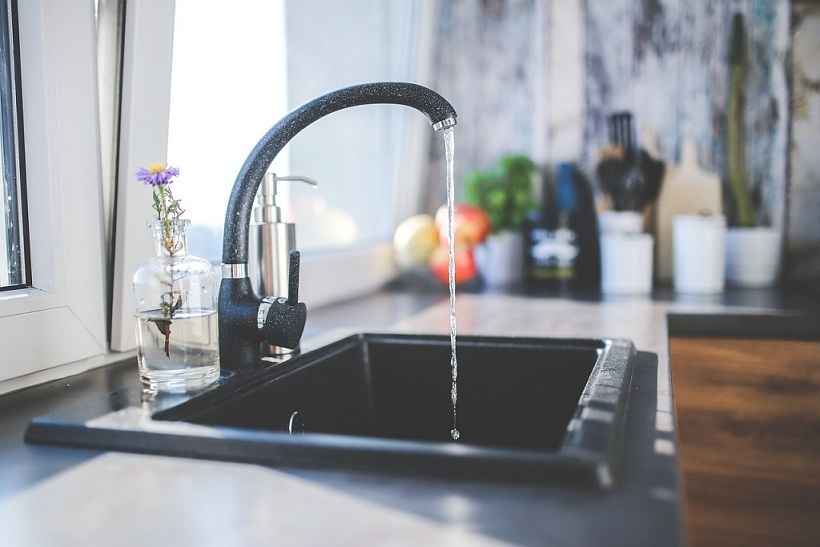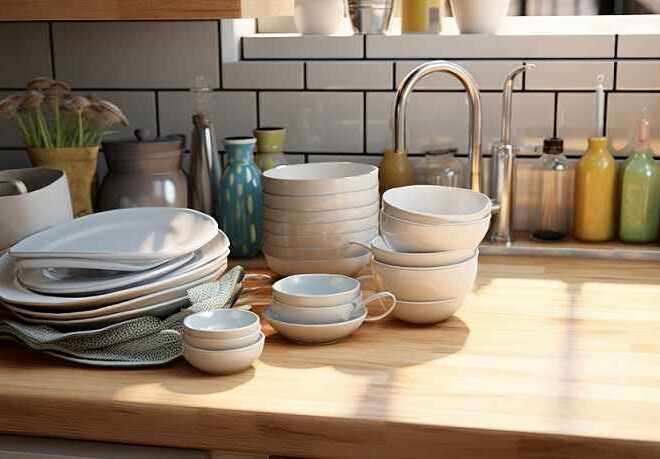
Kitchen Sink Dimensions 101: How to Measure Kitchen Sink Like a Pro
Understanding the Importance of Properly Measure Kitchen Sink
Understanding the Importance of Properly Measuring a Kitchen Sink When it comes to kitchen remodeling or installing a new sink, proper measurements are crucial for ensuring a successful and functional design. A kitchen sink is an essential part of any kitchen and it’s important to have accurate measurements in order to choose the right size and style for your space.
Here are some reasons why proper measuring is important when it comes to kitchen sinks:
- Ensures Proper Fit One of the most important aspects of measuring a kitchen sink is ensuring that it will fit into your existing or planned cabinet. If you choose a sink that is too large, it may not fit into the designated space and you will have to start over with finding a new one. On the other hand, if you choose a sink that is too small, there may be gaps around the edges which can lead to leaks and make cleaning difficult.
- Allows for Adequate Counter Space Properly measuring your sink also ensures that there will be enough counter space around the sink for food prep, dish drying, and other activities. If your sink takes up too much space on the counter, it can limit your ability to use this area effectively.
- Helps Determine Plumbing Needs Measuring your sink also helps determine where your plumbing connections should be located. This includes
Standard Kitchen Sink Dimensions: A Breakdown
When it comes to kitchen sinks, dimensions vary widely based on design and style. Standard widths usually vary from 24 inches to 36 inches. This measurement is crucial as it determines the sink’s compatibility with your cabinetry. Depth is another key dimension, usually between 8 inches and 10 inches for most models. A deeper basin can handle larger pots, making meal prep more efficient.
Height can also differ but often falls in line with overall cabinet height. Consider how this will affect ergonomics while washing dishes or preparing food.
Double-basin sinks tend to have slightly different measurements than single basins. They generally require additional width, so plan accordingly if you opt for this type.
Understanding these standard sizes helps ensure that your new kitchen sink fits seamlessly into your space without compromising functionality or aesthetics.
Measuring for a Drop-In or Top-Mount Sink
When measuring for a drop-in or top-mount sink, precision is key. Start by checking the countertop cutout dimensions. You want to ensure that your new sink fits perfectly into that space.
Measure from one edge of the opening to the other, focusing on both length and width. Keep in mind that most drop-in sinks require a bit of overhang, so add an inch or two extra beyond the cutout size.
Next, account for depth. This measurement is crucial because it affects how much space you’ll have below your countertop. A deeper sink can accommodate larger pots but may require additional cabinet height.
Lastly, don’t forget to check any surrounding features like cabinets or backsplashes. These could impact your choice if they limit how deep or wide you can go with your new sink selection.
Measuring for an Undermount Sink
When measuring for an undermount sink, precision is essential. Start by determining the cabinet space beneath your countertop. This will be the foundation for fitting your new sink.
Next, measure the length and width of the opening in your countertop. Ensure you account for any overhang that might affect installation. Undermount sinks typically require a specific cutout size to fit snugly against the counter.
Don’t forget to gauge the depth of your cabinets as well. It’s crucial that there’s enough space underneath to accommodate plumbing and ensure proper drainage.
Additionally, consider how far back from the front edge of the countertop you want your sink positioned. A few inches can make a difference in usability and aesthetics.
Remember, accurate measurements not only guarantee compatibility but also enhance functionality in daily kitchen tasks.
Different Materials, Different Measurements: How to Measure for Different Types of Sinks (Stainless Steel, Ceramic, etc.)
When measuring kitchen sinks, the material significantly influences dimensions and fitting. Stainless steel sinks often have a sleek design, usually with precise measurements. Their properties can allow for slight variations in depth depending on the gauge thickness.
Ceramic sinks tend to be heavier and bulkier. Measure both the outer dimensions and how deeply they fit into your countertop. The clay used may cause slight inconsistencies, so consider allowing extra space for installation.
Composite materials, like quartz or granite resin, combine beauty with durability but also require careful measurement due to their weight and installation needs. Pay attention to lip size; it can affect how flush they sit against your cabinetry.
Lastly, farmhouse-style sinks often embrace unique shapes that challenge traditional sizing standards. Ensure you account for apron lengths when measuring these distinctive designs to avoid surprises during installation.
Tips for Accurate Measurements and Avoiding Common Mistakes
Accurate measurements are vital when dealing with kitchen sinks. Start by using a reliable tape measure for precision. A metal tape measure is often more accurate than a cloth one.
Always measure twice, or even three times, to minimize errors. Small discrepancies can lead to significant issues later on.
When measuring the space where the sink will fit, ensure you account for any surrounding fixtures like faucets and cabinets. These elements can influence how much room you truly have.
Consider measuring from different angles as well; this helps identify any irregularities in your countertop or cabinetry that could affect sink installation.
Remember to note both width and depth separately instead of relying on general assumptions about sizing. This practice ensures you’re working with exact dimensions rather than estimates that may mislead your decisions down the line.
Choosing the Right Size for Your Needs and Space: Factors to Consider
When choosing the right size for your kitchen sink, consider your cooking habits. If you frequently prepare large meals or entertain guests, a wider basin can be beneficial.
Next, think about your counter space. A larger sink might look appealing but can overwhelm a compact kitchen layout. Balance is key.
Don’t forget about storage beneath the sink. Ensure ample room for plumbing and cleaning supplies without crowding the area.
Your family size also plays a vital role in decision-making. Larger households may require more functionality from their sinks compared to single-person homes.
Lastly, aesthetics matter too! The sink should harmonize with cabinetry and overall kitchen design while meeting practical needs efficiently. Finding that sweet spot between style and function will enhance both usability and beauty in your space.
Shopping for a Kitchen Sink Based on Your Measurements: What to Look For
Once you have your measurements, it’s time to hit the stores or browse online. Look for sinks that match your dimensions precisely. A snug fit is essential to avoid gaps and ensure proper installation.
Consider the style of sink too. Whether it’s a farmhouse, single basin, or double bowl design, make sure it complements your kitchen’s aesthetics.
Don’t overlook depth and width options as well; different tasks require different sizes. For instance, if you wash large pots frequently, a deeper sink may be more practical.
Material matters greatly too. Stainless steel offers durability while ceramic adds elegance but can be heavier and may need reinforcement.
Read product descriptions carefully to find out about mounting types and any additional features like soundproofing or drainage systems that enhance functionality in daily use.
Conclusion: Why Proper Measurement is Key in Achieving the Perfect Fit for Your Kitchen Sink.
Properly measuring your kitchen sink is essential for achieving a perfect fit and avoiding costly mistakes. It impacts not only the aesthetics of your kitchen but also its functionality. A well-measured sink allows for seamless installation, ensuring that it aligns perfectly with countertops and cabinets.
When you take the time to measure accurately, you’re setting yourself up for success. Each type of sink has specific dimensions that need consideration—whether you’re choosing a drop-in or undermount style, or selecting materials like stainless steel or ceramic.
Remember to factor in additional elements such as plumbing connections and countertop thickness when determining measurements. This attention to detail will help you select a sink that not only fits your space but suits your cooking habits too.
Ultimately, investing the effort into precise measurements pays off by enhancing both the look and usability of your kitchen—a space where everyone gathers. Take pride in getting those numbers right; they’ll lead you straight to the ideal kitchen sink solution tailored just for you!


